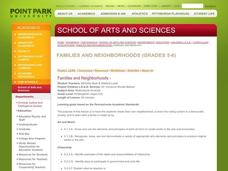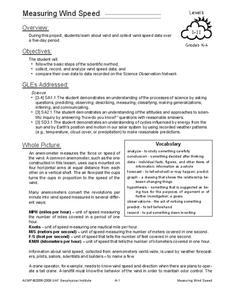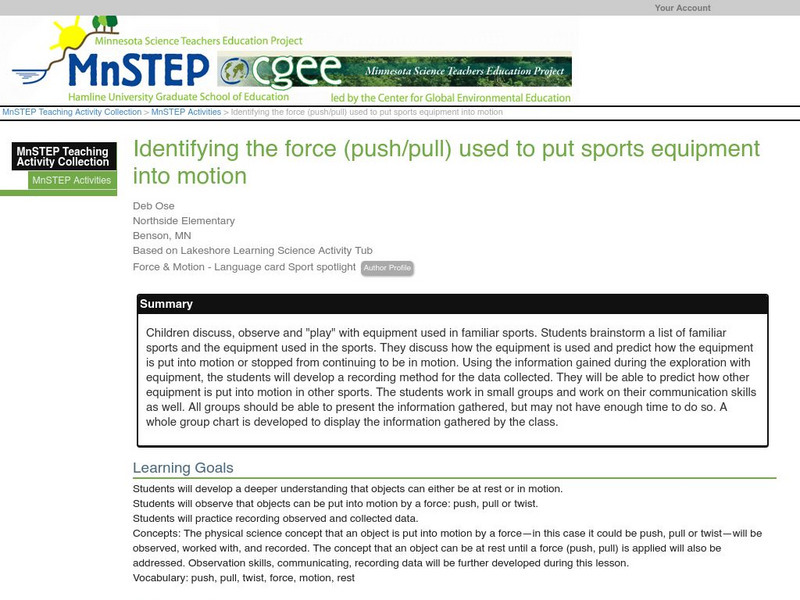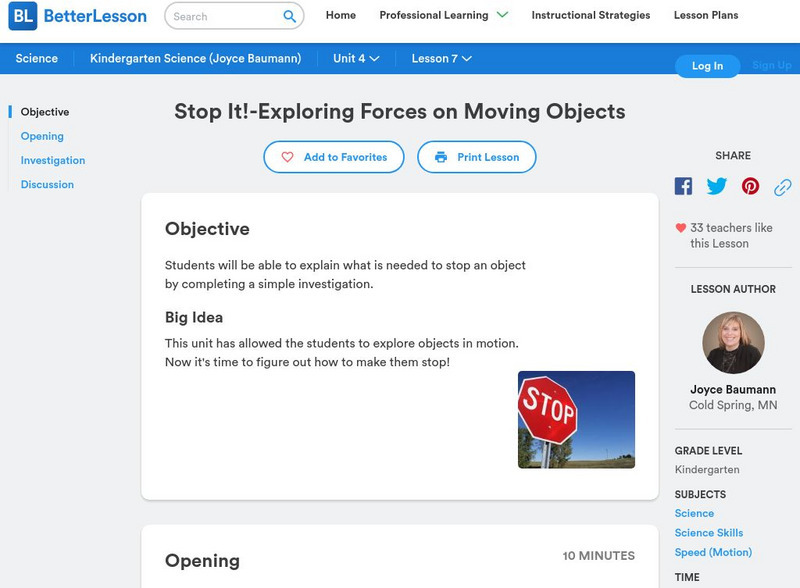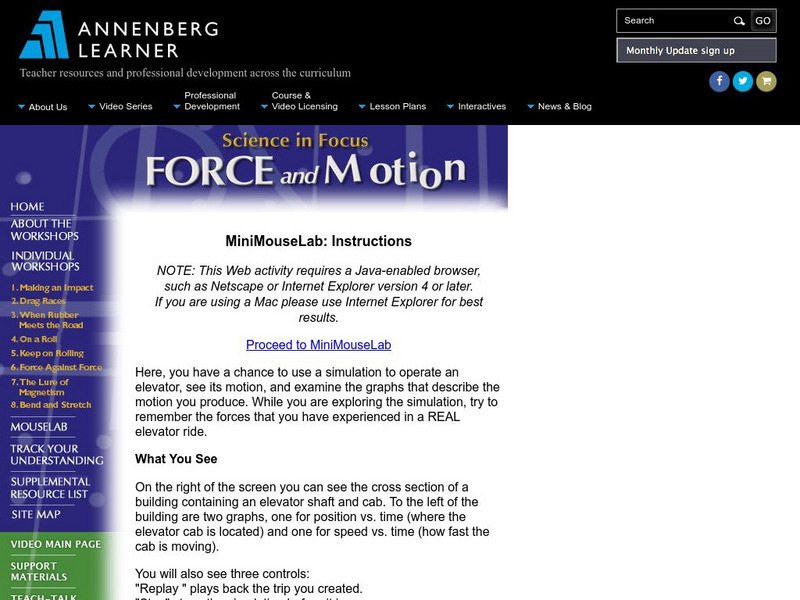Curated OER
Shake, Rattle and Roll
Students compare the weathering of different-sized materials. Comparisons are made and data analyzed to reach conclusions about the process of weathering. Applications can be made for the higher grades.
Curated OER
Games with a Large Parachute
Students control the parachutes using arm movements. They follow directions while participating in games. They explore the effects of wind on several objects and study the effects of shape, size and weight on a parachute.
Curated OER
Parachutes
Students control the parachutes using arm movements. They follow directions while participating in games. Students explore the effects of wind on several objects. They study the effects of shape, size and weight on a parachute.
Curated OER
Families and Neighborhoods
Pupils build their own neighborhood. In this lesson plan on community, students are introduced to books about families and neighborhoods. As a class, the pupils create their own neighborhood, elect a leader for their neighborhood and...
Curated OER
Ocean Currents
Learners discover the geography of Earth by analyzing water currents. In this oceanography lesson plan, students create visual references on a map of the globe where and why major ocean currents are moving water. Learners...
Curated OER
Measuring Wind Speed
Students study wind speed and collect wind speed data. In this wind speed lesson, students visit a website to learn about the local wind speed forecast for their week. Students discuss wind and wind speed. Students collect wind speed...
Curated OER
Water and Ice
Students will work in small groups, observing an ice cube and recording a description, the feel of the ice, and how it looks when put in another container. Students observe changes in the ice over 15 minute intervals, then freeze the...
E-learning for Kids
E Learning for Kids: Science: Indian Ocean: What Kind of Natural Forces Do We Recognize?
Learn about forces (push or pull), gravity, and friction in this module by training dolphins.
The Wonder of Science
The Wonder of Science: K Ps2 1: Pushes, Pulls, and Motion
Teaching students about pushes, pulls, and motion? Use this site to plan lessons for students to conduct investigations to compare the effects on the motion of an object when pushes or pulls come from different directions or strengths.
E-learning for Kids
E Learning for Kids: Science: Egypt: What Can Forces Do?
A learning module reviewing how much force is needed to push or pull objects. Also learn about the force of gravity.
PBS
Pbs Learning Media: The Ruff Ruffman Show: Fish Force
Use science inquiry to predict and investigate forces and motion to help rescue Ruff's plushie from the penguins' ice rink in this sports science game.
Science Education Resource Center at Carleton College
Serc: Investigating Motion: What Causes Objects to Move?
Young scholars will have an opportunity to determine what makes everyday objects move. Students will be given objects and asked to make predictions on how far each object will move after they blow on it. Then they will measure the...
Science Education Resource Center at Carleton College
Serc: Investigating Motion: Paths of a Marble
In this activity, children will investigate the paths that marbles take once set into motion and then how to change those paths, noting if and how they change.
E-learning for Kids
E Learning for Kids: Science: Seychelles: What Is a Force?
Cody the tour guide is learning about forces on the island. Try to help him learn about pushing and pulling.
Better Lesson
Better Lesson: A Change of Direction Exploring the Impact of Forces
Students will be able to determine a way to change the direction of a moving object by conducting a simple experiment. Included in this lesson are videos of the activity in action, a printable recording sheet, pictures of the set-up for...
Other
Bscs: Forces and Motion Content Background Document
In this document, we will try to answer a fundamental question of physical science, "Why do things start to move, slow down, speed up, stop moving or change direction?" In answering these core questions we can develop concepts that can...
Science Education Resource Center at Carleton College
Serc: Investigating Motion With Marbles
In this guided inquiry activity, students will use 2 marbles of different size and a box to investigate what makes the marbles move and what will cause the marbles to change speed and direction.
The Wonder of Science
The Wonder of Science: K Ps2 2: Motion Design Solution
The NSTA vetted source includes resources to teach how to analyze data to determine if a design solution works as intended to change the speed or direction of an object with a push or a pull. Included are assessment ideas, videos,...
Science4Fun
Science4 Fun: Force
What is force? Illustrated discussion of how force is calculated and three familiar types.
Science Education Resource Center at Carleton College
Serc: Identifying the Force Used to Put Sports Equipment Into Motion
Children discuss, observe, and play with equipment used in familiar sports, and then brainstorm a list of familiar sports and the equipment used in the sports. They discuss how the equipment is used, and predict how it is put into motion...
Other
Bscs: Common Student Ideas About Forces and Motion
This list describes common misconceptions children have about force and motion and the scientific explanation for those ideas.
Better Lesson
Better Lesson: Stop It! Exploring Forces on Moving Objects
Students will be able to explain what is needed to stop an object by completing a simple investigation. Students will experiment with Hot Wheel cars and record their predictions on a recording sheet. Included are videos of the activity...
University of Florida
Florida Museum of Natural History: Physical Science
This guide focuses on four physical science topics that fascinate children and scientists alike. They are motion, magnets, sound, and light. With your guidance and support, these topics provide children with many opportunities to explore...
Annenberg Foundation
Annenberg Learner: Mini Mouse Lab
Use a simulation to operate an elevator and see its motion. Examine the graphs that describe the motion you produce.



